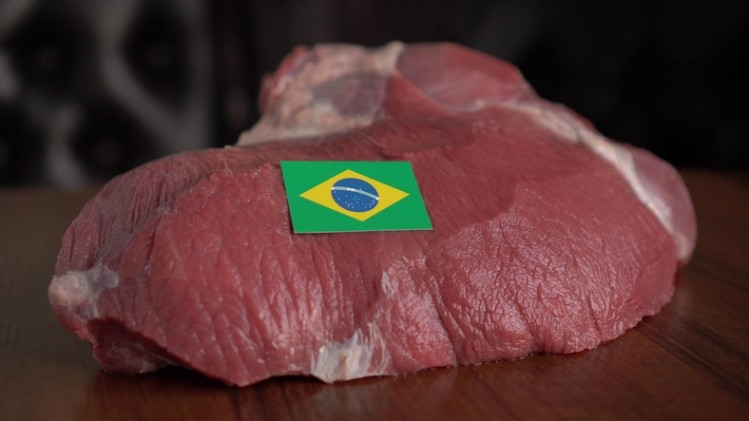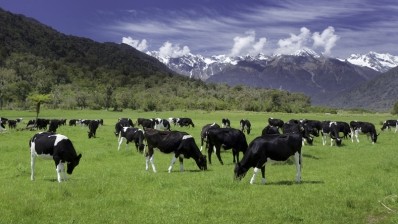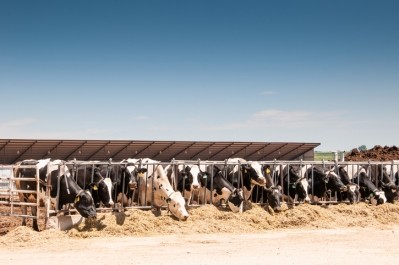DSM looks to reduce methane emissions in Brazilian beef sector

The methane inhibitor – 3-nitrooxypropanol or 3NOP – was developed under DSM’s 10-year long Project Clean Cow.
In Brazil, where the cattle herd is estimated at 214.9 million head, trials showed promising results as DSM added the compound to the diet of beef cows and obtained reductions of methane emissions between 45% and 55%, said Mark van Nieuwland, program director at DSM.
"We will be filing in the second half of 2020 and we would expect market approval within 6-12 months thereafter," he told this publication today in relation to seeking authorization for the feed additive in Brazil.
DSM is also seeking approval for its use in dairy cows in that market.
In July, we reported that the Dutch health and nutrition company had commenced filing for EU authorization for its new feed additive for dairy cows in a bid to reduce the environmental footprint of EU milk and dairy products, with van Nieuwland telling us then that the feed additive would initially be targeted at more intensive dairy systems in Europe - Total Mixed Ration (TMR) and Partial Mixed Ration (PMR):
"Most major European markets have TMR and PMR farms, the main exception being Ireland."
Subsequent forms of the methane inhibitor, which are in final stages of development, will be targeted at pasture-based systems and would be available shortly thereafter, he said.
Dosage levels
Dosage rates for 3NOP differ by species and also diets, said van Nieuwland.
"We target a label, which would accommodate for these differences, and allow all users to reach around 30% methane reduction.
"If we compare a lactating dairy cow and finishing beef cattle in a feedlot, the dose levels in terms of inclusion rate (mg per kg of feed) will be different; however, the actual grams/head/day are quite close to one another."
He said that, based on results to date, DSM has observed methane emission reductions of between 20 and 80% when using the feed additive in beef cow rations: "As mentioned above, this can be largely explained by diet and inclusion rate. We therefore feel comfortable that a reduction of 30% is achievable."
Fibre levels, dairy v beef efficacy and methane inhibitor
A meta-analysis published in the Journal of Dairy Science last year found that the efficacy of 3NOP in mitigating methane emissions is smaller when the fiber content of the diet is greater.
For every 50g increase in fibre per kg feed, the reduction in methane emission by 3NOP was 8% smaller, said the authors.
Thus, the reviewers, which involved experts from Wageningen University and Research (WUR), UC Davis, and the University of Guelph, said greater levels of NOP are required for high fibre diets to decrease methane emissions.
They also said a surprising result of the meta-analysis was the difference in response to 3NOP between dairy and beef cattle. When adjusted to the same 3NOP dose and diet composition, the methane mitigating effect of 3NOP was less in beef cattle (22% reduction) than in dairy cattle (39% reduction), they said.
“Both for practical application as well as for inventory reports, the finding that 3NOP works more effectively in dairy than in beef cattle is of large significance,” Jan Dijkstra, WUR, said. “This greater efficacy is likely associated with higher feed intake level in dairy cattle. The higher intake increases hydrogen concentrations in the rumen of cattle, which favors routes of hydrogen disposal other than through formation of methane. In such conditions, smaller amounts of 3NOP are required to decrease methane emissions.”
The reviewers said they also found clear evidence that the amount of 3NOP added to the diet enhances the 3NOP methane mitigating effect. 3NOP specifically inactivates the enzyme methyl coenzyme M reductase, which is the key enzyme responsible for producing methane by microorganisms in the fore stomachs of ruminants. Adding more 3NOP to the diet inactivates a greater amount of this enzyme, leading to more pronounced reductions in methane emissions, they added.
Commenting on that meta-analysis, van Nieuwland said it "was conducted based on a limited set of data, particularly on the beef side, [where it included] only a subset of data that was available."
"Our commercial scale study in Alberta, Canada, [carried out] with the support of the Emission Reduction Alberta (ERA), has provided substantial, additional insight."
Furthermore, the meta-analysis did not fully accommodate for differences in feeding practices and actual inclusion rate, he said.
"And some of this data was not published by the researchers conducting the trial, and was, therefore, not available to the authors of the meta-analysis. Internally, we do have the full data set and insights. We therefore feel comfortable that a reduction [in methane emissions in cows] of about 30% is achievable."
Source: Journal of Dairy Science
DOI: https://doi.org/10.3168/jds.2018-14456
Title: Short communication: Antimethanogenic effects of 3-nitrooxypropanol depend on supplementation dose, dietary fiber content, and cattle type
Authors: J. Dijkstra, A. Bannink, J. France, E. Kebreab
The original article was updated to incorporate the comments from Mark van Nieuwland, program director at DSM















